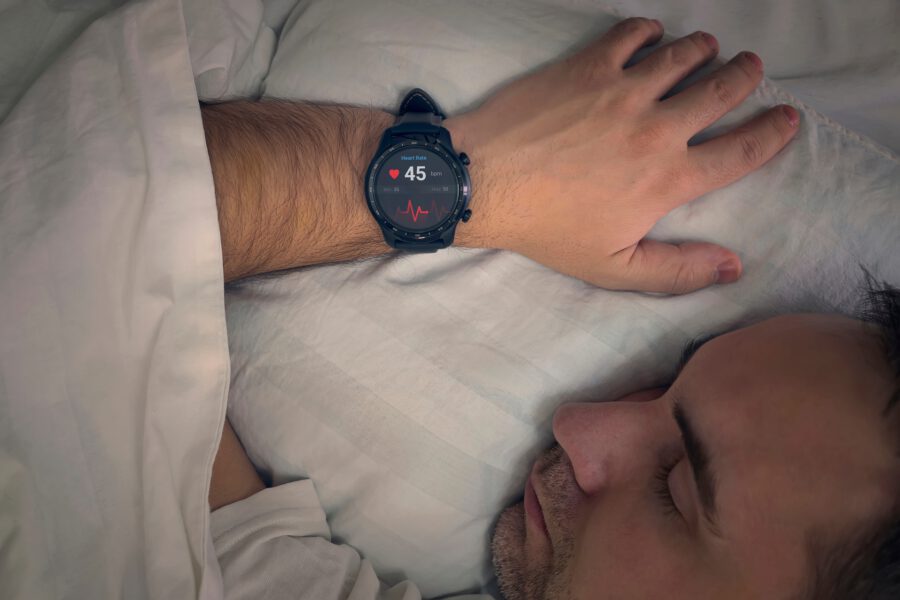How to Transition from Intermediate to Advanced Lifter
Most people think becoming an advanced lifter just means lifting heavier weights or training for more years. But the real shift from intermediate to advanced isn't just about time or strength. It's about how you train, how you recover, and how you think about progress.
As an intermediate lifter, you’ve probably already built a solid foundation. You know your way around the gym, you’ve seen some real progress, and you’re not a beginner anymore. But now things have slowed down. Gains are harder to come by, and you might feel stuck even though you're still putting in the work. This stage is where many lifters either burn out or level up.
This article will discuss how you can go from intermediate to advanced lifter and apply key strategies to improve your fitness.
An advanced lifter isn’t just someone who’s been in the gym for a few years or can bench heavy. Advanced lifters are defined by how they train, how they recover, and how much thought they put into progression. Their technique is solid, their routines are dialed in, and they understand their own bodies well enough to tweak and adjust when needed.
One of the clearest markers of being advanced is how slow progress becomes. Personal records happen maybe once every few months, not every few weeks. Visual changes take even longer. It’s just the reality of chasing peak performance when your body is already near its current limit.
In contrast, intermediate lifters still make noticeable progress, especially with consistent training. They can usually gain strength and build muscle steadily if they follow a well-structured program. But they still rely more on fixed routines, may lack auto-regulation skills, and often need clearer external feedback to measure progress.
The shift from intermediate to advanced means knowing what works best for you, not just what looks good on paper. You train with more purpose, recover with intention, and recognize that what got you here won’t take you further without adjustments.
| Factors | Intermediate Lifter | Advanced Lifter |
| Motivation | Still motivated by visible progress like PRs or physique changes. | Motivated by mastery, lifestyle, discipline, and enjoyment of the training process. |
| Routine Rigidity | Needs structure with defined exercises, sets, reps, and tracked progress. | Uses auto-regulation and adjusts training based on recovery and experience. |
| Volume and Intensity | Increases training volume to break through plateaus. | Trains with less overall volume but gets more out of each set due to efficiency. |
| Exercise Selection | Builds programs around classic compound lifts (squats, deadlifts, presses) to build strength and movement patterns. | Prioritizes exercises based on personal biomechanics, recovery capacity, and stimulus-to-fatigue ratio. May swap out heavy barbell lifts for machine or isolation work that gives high return |
| Technique and Execution | Still refining form and learning movement patterns. | Has mastered technique and focuses on maximizing tension and precision. |
Here are the signs that you are moving beyond the intermediate phase:
- Your progress has plateaued significantly and you need advanced programming techniques like periodization to continue making gains.
- You can feel exactly when your form breaks down and coach others on proper technique.
- You need structured training cycles with planned rest weeks to keep making progress.
- Your lifts are getting close to competitive levels for your size and gender.
- You need to carefully manage sleep, nutrition, and stress to recover from your workouts.
- You know exactly how your body responds to different exercises and training styles.
- You're focusing on specific goals like powerlifting or bodybuilding rather than general fitness.
Here’s an advanced workout plan for women:
Here’s an advanced workout plan for men:
Hitting a plateau as an intermediate lifter is common and expected. In the beginning, almost anything works. Your body is adapting quickly, and progress feels fast and constant. But as you build more muscle and strength, the gains naturally slow down. What used to work suddenly stops delivering results.
The problem is that many lifters keep using beginner methods for too long. They rely on generic programs, chase numbers without strategy, and push volume without thinking about recovery.
Another reason many stay stuck in the intermediate phase is mindset. Some expect fast results forever. When that doesn’t happen, they get discouraged or jump from one routine to the next without giving anything time to work. Moving forward requires patience, consistency, and the willingness to fine-tune the details.
To transition from being an intermediate lifter, you must know what advanced lifters do and strive to achieve that goal safely and efficiently.
Motivation is limited and runs out over time. While consistency matters more than motivation for fitness success, you still need some level of motivation to stick with training for years or even a lifetime.
Advanced lifters move away from short-term goals like aesthetics or PRs. They find purpose in the process itself. They create routine and tailor their lifestyle around fitness through discipline and mental clarity.
In short, you need to shift from training for health or looks to training because it's part of who you are and adds value to your life. Your motivation should not come from vanity metrics such as likes from social media, or how other people will perceive you but rather from the discipline, mental clarity, stress relief, and sense of accomplishment that training brings to your daily life.
Auto-regulation means listening to your body and adjusting your training based on how you feel rather than blindly following a rigid program. This skill becomes crucial as you advance because your recovery capacity varies day to day based on sleep, stress, nutrition, and life circumstances.
Instead of forcing yourself through a prescribed 5x5 at 85% when you're exhausted, auto-regulation teaches you to recognize when your body needs a lighter day. You might reduce the weight, cut back on sets, or focus on technique work instead of grinding through heavy loads that could lead to injury or poor recovery.
The key is developing awareness of your internal signals. Some days you'll walk into the gym feeling unstoppable - that's when you push harder and maybe add an extra set or increase the weight. Other days, even your warm-up sets feel heavy - that's your cue to scale back and prioritize recovery over performance and start adding a deload week to your training.
Learn to:
- Adjust sets, reps, or intensity based on how you feel that day.
- Use tools like RPE (Rate of Perceived Effort) or bar speed as feedback
- Train hard when you’re recovered, and dial back when you are not
Recovery tracking becomes essential as training intensity increases and your body's ability to bounce back becomes the limiting factor in your progress.
Advanced lifters understand that adaptation happens during recovery, not during the workout itself, so monitoring your recovery status is just as important as tracking your lifts.
Learning to distinguish between different types of fatigue is crucial. Muscle soreness from a good workout is different from the deep, systemic fatigue that signals overreaching. Mental fog, irritability, elevated resting heart rate, or consistently poor sleep quality are warning signs that your body needs more recovery time, not another hard training session.
If you're sleeping poorly and feeling run down, that's not the day to attempt a new PR. Conversely, when you're sleeping well, feeling energetic, and your usual weights feel light, that's when you can push harder and make real progress.
Try these:
- Rate your sleep quality (1-10) and energy levels each morning before training.
- Track your resting heart rate - consistently elevated levels indicate poor recovery.
- Monitor your mood and motivation levels throughout the week.
- Note unusual muscle soreness that persists longer than normal.
- Check grip strength or jump height as objective recovery markers.
Program hopping becomes a trap that prevents real progress. Advanced lifters understand that mastery comes from depth, not variety. Instead of constantly chasing the newest program or exercise variation, they focus on perfecting what already works for their body and goals.
The magic isn't in finding the perfect program; it's in executing an adequate program exceptionally well over time. Every exercise has layers of complexity that only reveal themselves through consistent practice. Your squat will keep improving not because you switch to Bulgarian split squats, but because you master the subtleties of breathing, bracing, and movement timing.
This shift from seeking novelty to pursuing mastery separates intermediate lifters from advanced ones. When you stop searching for shortcuts and start refining your execution, every rep becomes an opportunity to get better rather than just another step toward your next program change.
Try These:
- Stick with the same core movements for at least 6-12 months before making changes.
- Focus on one technique improvement per exercise each month.
- Practice perfect form with lighter weights before adding load.
- Record yourself lifting to identify subtle form breakdowns.
- Prioritize quality over quantity - make every rep deliberate and controlled.
Progress at advanced levels happens in waves rather than straight lines. You might spend three months working on technique refinements that don't show immediate results, followed by a breakthrough period where everything clicks. Or you might maintain the same lifts for six months while your body composition slowly improves in ways that only become obvious when you compare photos from different years.
Learning to find satisfaction in the process rather than just the outcomes becomes essential for long-term success. The discipline of showing up consistently, the gradual mastery of movement patterns, and the mental resilience you build become rewards in themselves, independent of whether you hit a new PR this month.
Try These:
- Set annual goals instead of monthly targets for major lifts or physique changes.
- Track progress photos every 3-6 months rather than weekly.
- Focus on process goals like "train 4x per week" rather than outcome goals like "gain 10 pounds."
- Celebrate small wins like improved recovery, better sleep, or technique breakthroughs.
- Plan training in 12-16 week blocks with specific focuses rather than changing weekly.
Here’s an advanced calisthenics workout plan for women:
Here’s an advanced calisthenics workout plan for men:
The transition from intermediate to advanced lifting is about emphasizing mindset over metrics. At this stage, your training becomes less about proving something to others, reaching arbitrary numbers and more about building a practice that enhances every aspect of your life.
It means finding motivation in the process itself rather than external validation, trusting your body's signals over rigid programming, and understanding that sometimes the most productive thing you can do is rest. You stop measuring success by weekly progress and start thinking in terms of yearly growth.
Moving to the advanced level means accepting that training is no longer about quick fixes or dramatic transformations. The fitness lifestyle is a long game and it’s about consistency and refinement.

